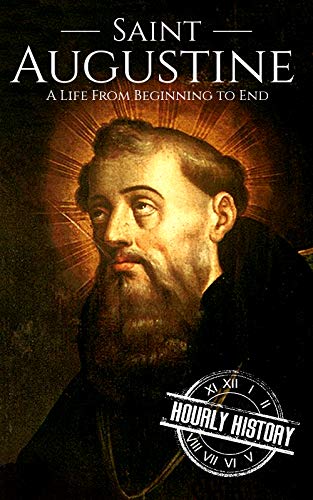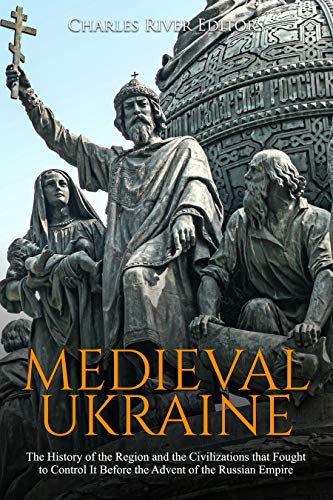Medieval Ukraine: The History of the Region and the Civilizations that Fought to Control It Before the Advent of the Russian Empire
*Includes pictures*Includes a bibliography for further reading*Includes a table of contents “Had I just 10,000 Cossacks, I would have conquered the whole world.” – Napoleon Bonaparte The history of Ukraine is a fascinating story of how cultures, political systems, religions, and power have met, intersected, morphed, and expanded. The region was relatively sparsely populated for
*Includes pictures
*Includes a bibliography for further reading
*Includes a table of contents
“Had I just 10,000 Cossacks, I would have conquered the whole world.” – Napoleon Bonaparte
The history of Ukraine is a fascinating story of how cultures, political systems, religions, and power have met, intersected, morphed, and expanded. The region was relatively sparsely populated for much of ancient history, a wilderness of rivers, forests, and steppes, but that does not detract from the rich historical development of the region. A huge area, Ukraine is wedged between the continents of Asia and Europe, and its position as a crossroads ensured there was fierce competition for influence there. Historians have called the formation of Ukraine the “establishment of a unity among three zones…the ports of Crimea and the coast, the rich steppe heartland, and the forests,” based around the themes of “geography, ecology and culture.”
Today’s Ukraine is a huge country, incorporating an area over 600,000 square kilometers and home to 42 million people. It stretches from the Crimean Peninsula on the Black Sea in the south to Belarus in the north, Russia to the east, and Poland, Slovakia, and Hungary to the west. The Dnieper River is the region’s key waterway, running into the Black Sea, while the Danube Delta also forms its border with modern-day Romania to the southwest. A steppe exists in the middle of the country while the Carpathian Mountains feature in the west. This geographical formation has influenced some of the country’s key historical developments, as well as the location of its major settlements. Kiev (known today as Kyiv) is, of course, the longstanding capital of the country, located on the Dnieper River in the central northern part of modern Ukraine. Lviv is another large city, located in the northwest near the border with Poland. Odessa is a seaside city on the Black Sea in Ukraine’s southwest, while Kharkiv, Luhansk, and Donetsk are major cities in the country’s east, close to the Russian border.
Some historians believe that Kiev, Ukraine’s capital city, was founded by Khazars, as the word is a Turkic language composite of “riverbank” and “settlement,” and the city contained a significant population of Jewish Khazars. Others believe the city predates the Khazars and actually emerged as a trading route in the 6th century CE, mainly populated by Slavs. One legend outlines how Kiev was named after Kyi, the eldest of four siblings (Shchek, Khoryv, and Lybid were the others) who hold a legendary place in Ukrainian folklore, either as travelers, emissaries, or warriors. This is documented in the Rus’ Primary Chronicle, written in the 12th century CE. As with so many other parts of medieval history, the facts remain often contested. Nevertheless, what is known is that one of the first great catalysts of Ukrainian history occurred when the Khazars came into conflict with the Rus, conquering tribes from the northwest.
After those cultures helped develop the region, the legendary Cossacks arrived during the early modern period and dominated the region for several centuries, forming an independent republic that helped forge Ukrainian identity to this day. The modern myth of the Cossack presents striking images of a stern warrior mounted on horseback, with a long woolen coat, papakha (distinctive tall fur cap ) and fur-lined cloak, with bandoliers holding large-caliber bullets crisscrossing his chest. The warrior is armed with a mixture of rifle, lance, daggers and pistols, but he always has his signature weapons: the shashka (a single-edged, guard-less, slightly curved saber originally designed by the Circassian foes) and the nagyka (short, thick whip of braided leather with a heavy weight worked into the end originally designed for fighting off wolves but more commonly used in later years against enemies of the state in the streets of Moscow or Odessa).
Bestsellers 2021
Auto Amazon Links: No products found.







Comments
Comments are disabled for this post.